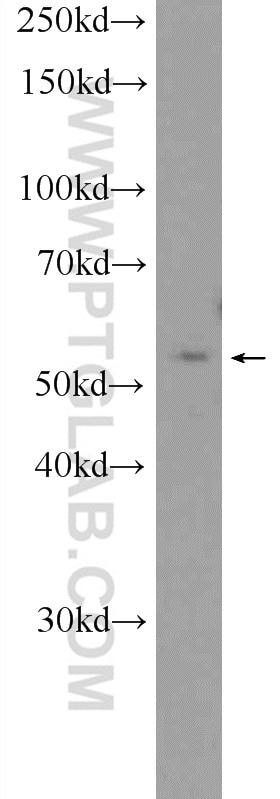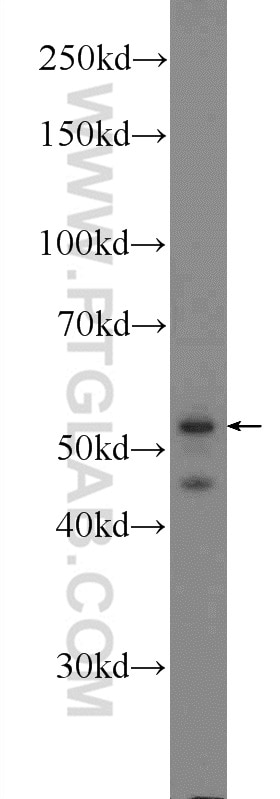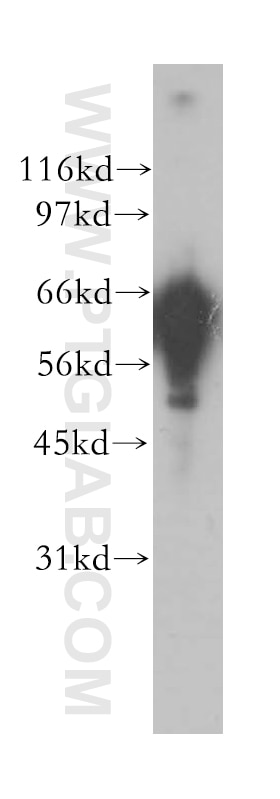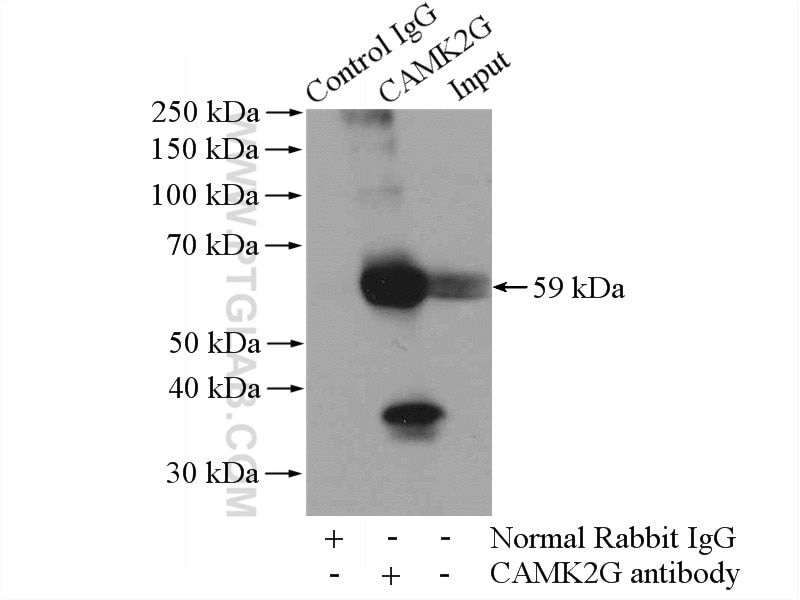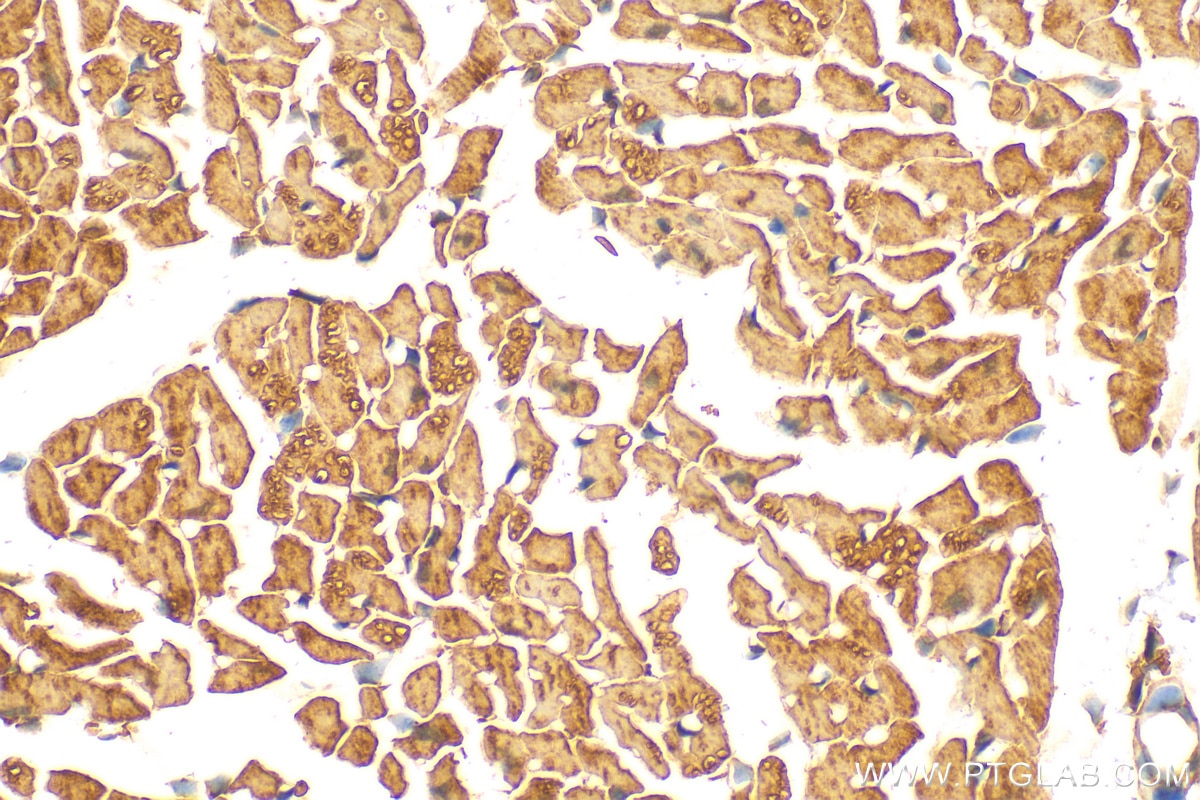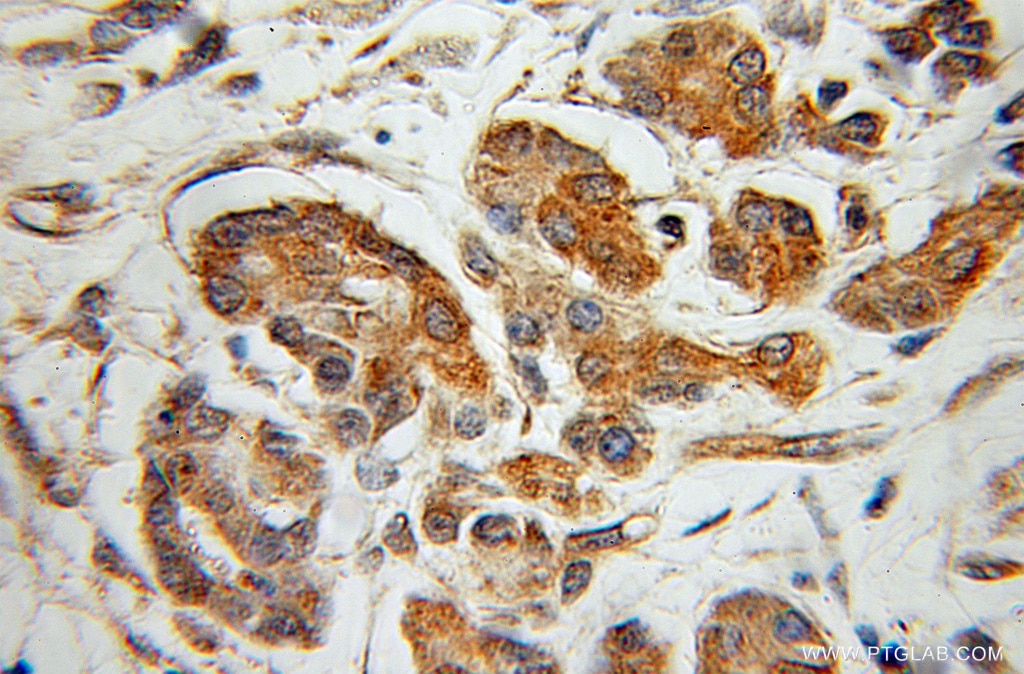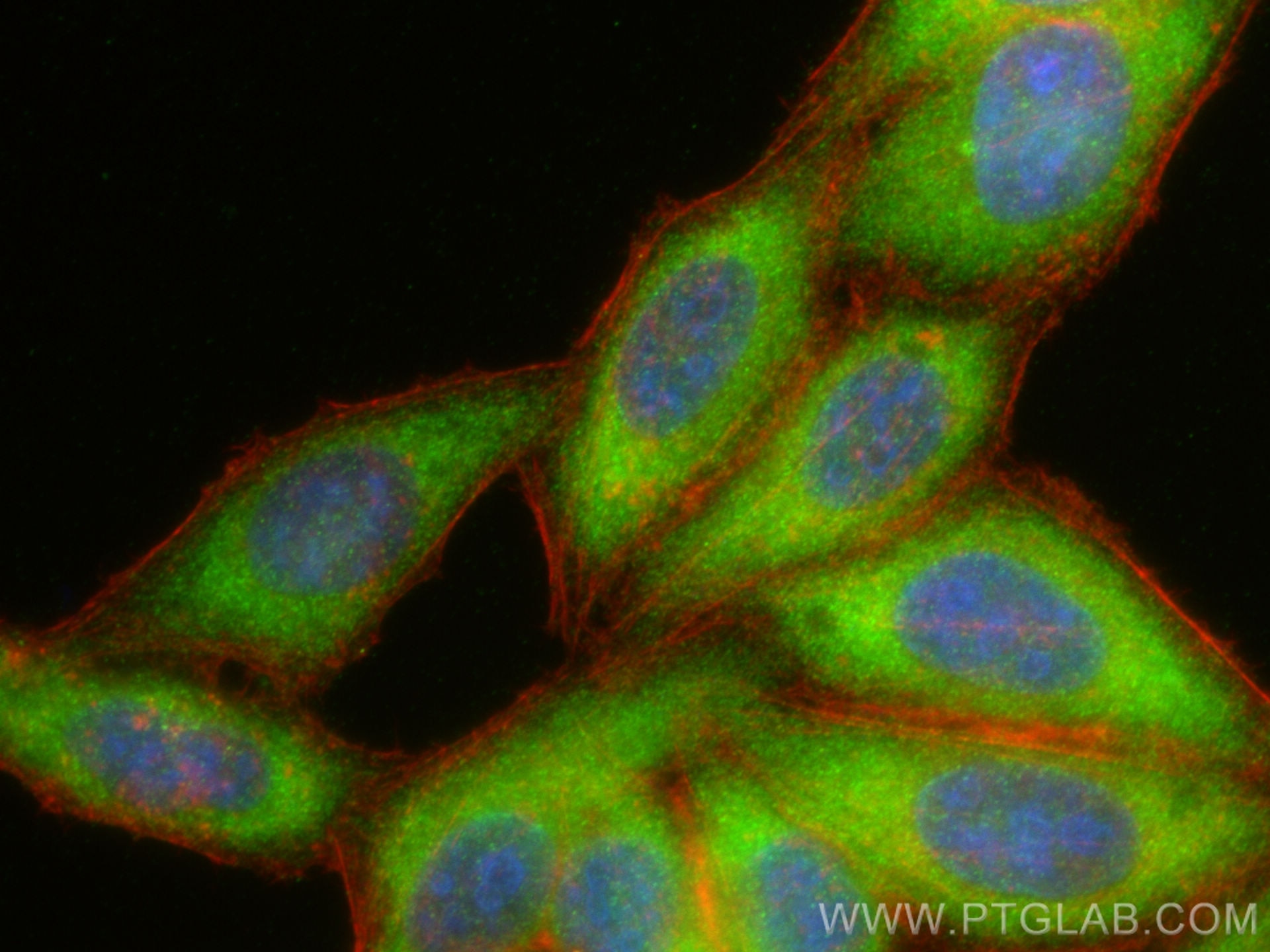- Phare
- Validé par KD/KO
Anticorps Polyclonal de lapin anti-CaMKII Gamma
CaMKII Gamma Polyclonal Antibody for WB, IHC, IF/ICC, IP, ELISA
Hôte / Isotype
Lapin / IgG
Réactivité testée
Humain, rat, souris
Applications
WB, IHC, IF/ICC, IP, ELISA
Conjugaison
Non conjugué
N° de cat : 12666-2-AP
Synonymes
Galerie de données de validation
Applications testées
| Résultats positifs en WB | cellules SMMC-7721, tissu cérébral humain |
| Résultats positifs en IP | tissu cardiaque de souris |
| Résultats positifs en IHC | tissu cardiaque de souris, tissu de cancer du pancréas humain il est suggéré de démasquer l'antigène avec un tampon de TE buffer pH 9.0; (*) À défaut, 'le démasquage de l'antigène peut être 'effectué avec un tampon citrate pH 6,0. |
| Résultats positifs en IF/ICC | cellules HepG2, |
Dilution recommandée
| Application | Dilution |
|---|---|
| Western Blot (WB) | WB : 1:1000-1:4000 |
| Immunoprécipitation (IP) | IP : 0.5-4.0 ug for 1.0-3.0 mg of total protein lysate |
| Immunohistochimie (IHC) | IHC : 1:50-1:500 |
| Immunofluorescence (IF)/ICC | IF/ICC : 1:200-1:800 |
| It is recommended that this reagent should be titrated in each testing system to obtain optimal results. | |
| Sample-dependent, check data in validation data gallery | |
Applications publiées
| KD/KO | See 1 publications below |
| WB | See 27 publications below |
| IHC | See 2 publications below |
| IF | See 3 publications below |
| IP | See 1 publications below |
Informations sur le produit
12666-2-AP cible CaMKII Gamma dans les applications de WB, IHC, IF/ICC, IP, ELISA et montre une réactivité avec des échantillons Humain, rat, souris
| Réactivité | Humain, rat, souris |
| Réactivité citée | rat, Humain, souris |
| Hôte / Isotype | Lapin / IgG |
| Clonalité | Polyclonal |
| Type | Anticorps |
| Immunogène | CaMKII Gamma Protéine recombinante Ag3348 |
| Nom complet | calcium/calmodulin-dependent protein kinase II gamma |
| Masse moléculaire calculée | 527 aa, 59 kDa |
| Poids moléculaire observé | 59 kDa |
| Numéro d’acquisition GenBank | BC034044 |
| Symbole du gène | CAMK2G |
| Identification du gène (NCBI) | 818 |
| Conjugaison | Non conjugué |
| Forme | Liquide |
| Méthode de purification | Purification par affinité contre l'antigène |
| Tampon de stockage | PBS with 0.02% sodium azide and 50% glycerol |
| Conditions de stockage | Stocker à -20°C. Stable pendant un an après l'expédition. L'aliquotage n'est pas nécessaire pour le stockage à -20oC Les 20ul contiennent 0,1% de BSA. |
Informations générales
CaMKII gamma, also named CAMKG or CAMK2G, belongs to the protein kinase superfamily, CAMK Ser/Thr protein kinase family, and CaMK subfamily. CAMK2 is a prominent kinase in the central nervous system that may function in long-term potentiation and neurotransmitter release. CAMK2G is expressed in human beta cells as a candidate gene for Type II (non-insulin-dependent) diabetes mellitus. Some studies can be used to assess the role of CAMK2G in the susceptibility to Type II diabetes(PMID: 12032636). CAMK2G has some isoforms with the MW of 55-66 kDa and this antibody can recognize all the isoforms of CAMK2G. This antibody may have cross-reaction with CAMK2A/B/D due to the high homology.
Protocole
| Product Specific Protocols | |
|---|---|
| WB protocol for CaMKII Gamma antibody 12666-2-AP | Download protocol |
| IHC protocol for CaMKII Gamma antibody 12666-2-AP | Download protocol |
| IF protocol for CaMKII Gamma antibody 12666-2-AP | Download protocol |
| IP protocol for CaMKII Gamma antibody 12666-2-AP | Download protocol |
| Standard Protocols | |
|---|---|
| Click here to view our Standard Protocols |
Publications
| Species | Application | Title |
|---|---|---|
Neuron JAKMIP1, a Novel Regulator of Neuronal Translation, Modulates Synaptic Function and Autistic-like Behaviors in Mouse. | ||
Adv Healthc Mater Bioelectrically Reprogramming Hydrogels Rejuvenate Vascularized Bone Regeneration in Senescence | ||
Transl Res Cardiac-Specific Overexpression of CREM-IbΔC-X via CRISPR/Cas9 in Mice Presents a New Model of Atrial Cardiomyopathy with Spontaneous Atrial Fibrillation | ||
Oncotarget PIWIL1 destabilizes microtubule by suppressing phosphorylation at Ser16 and RLIM-mediated degradation of Stathmin1. | ||
Development Calmodulin-dependent protein kinase gamma 3 (CamKIIgamma3) mediates the cell cycle resumption of metaphase II eggs in mouse. | ||
Aging (Albany NY) CAMKIIγ is a targetable driver of multiple myeloma through CaMKIIγ/ Stat3 axis.
|
